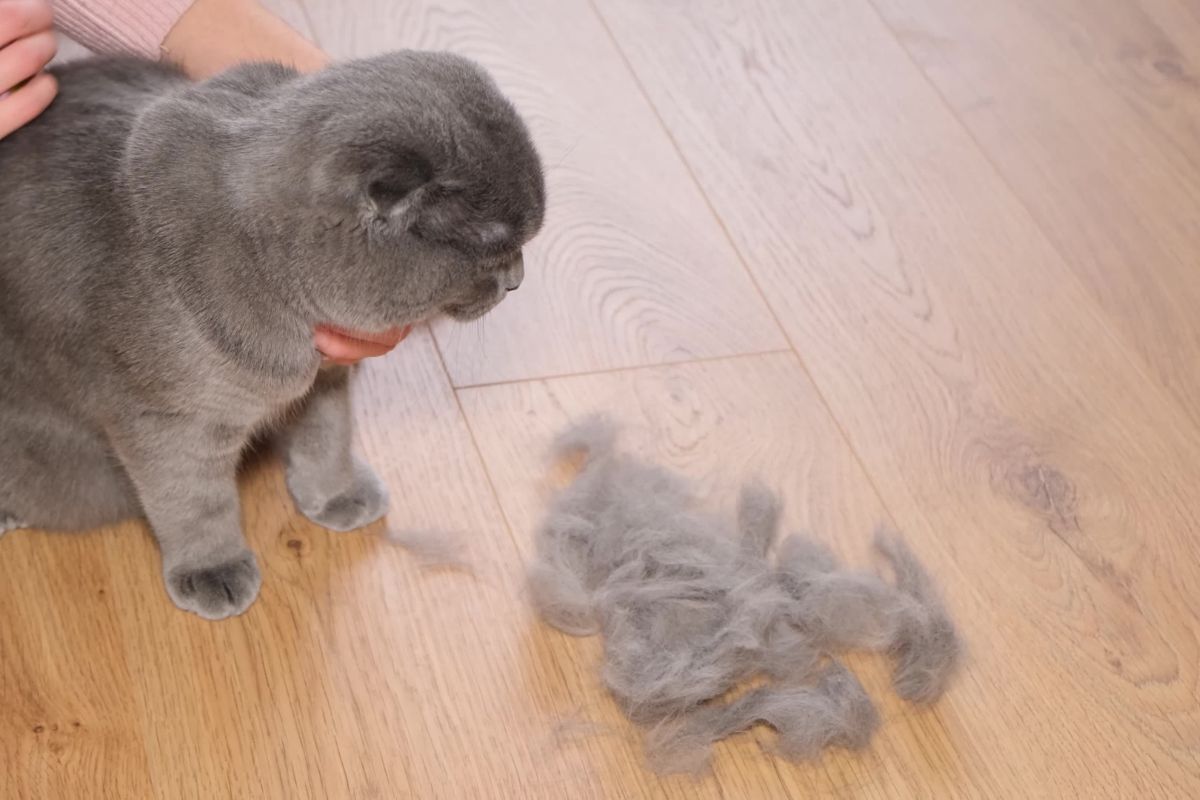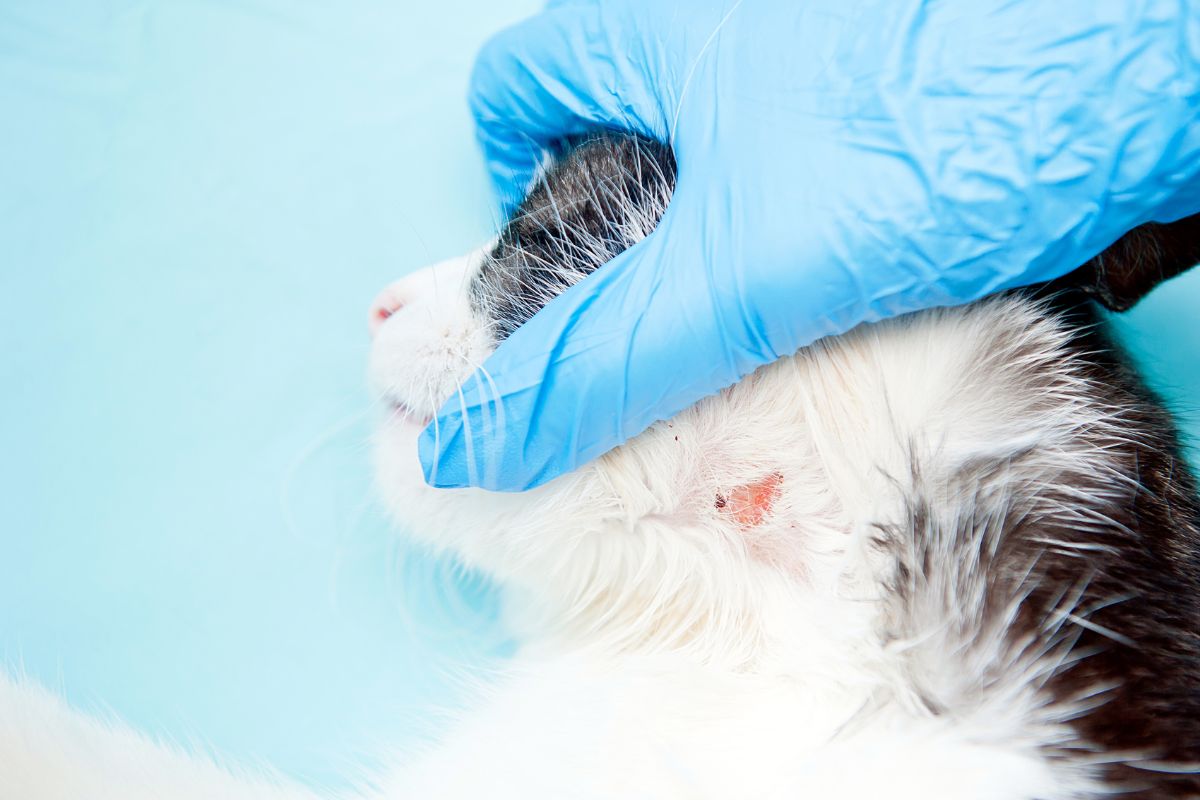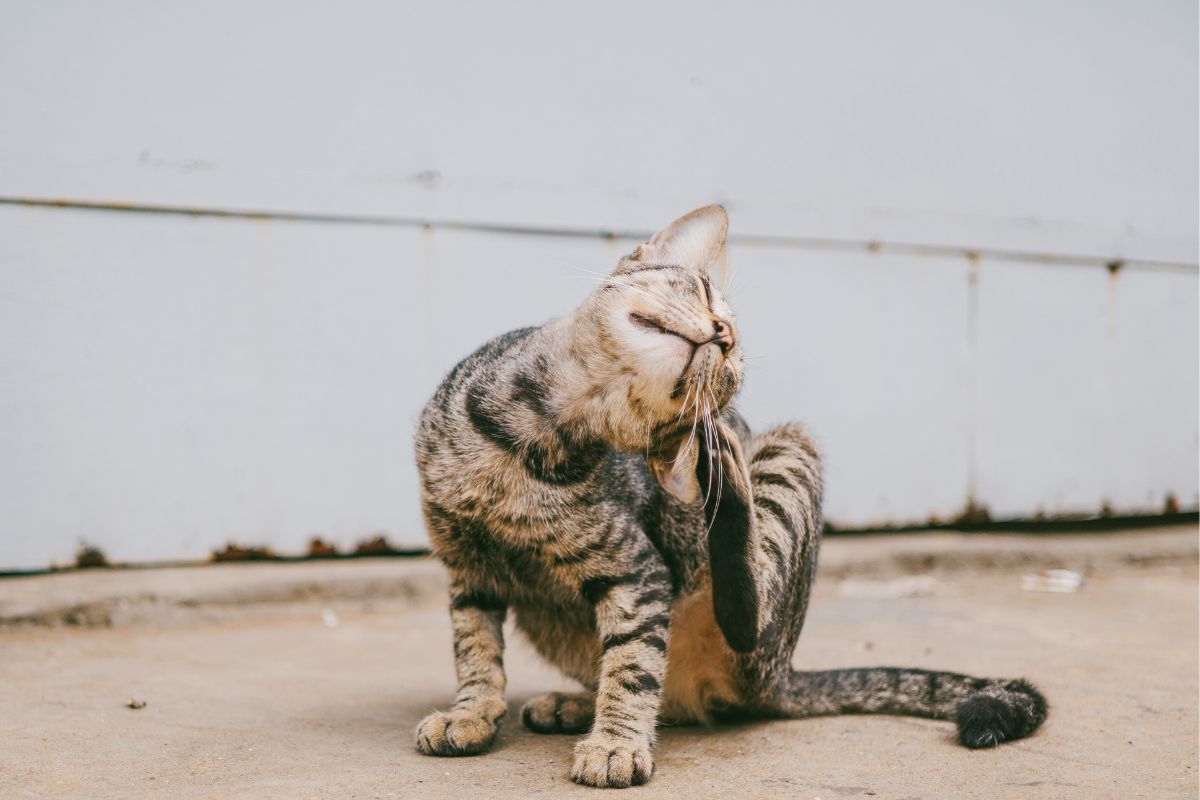Many people believe that cats are one of the cleanest animals, but that doesn't mean they’re immune to skin issues — especially ringworm. This is one of the most common and contagious skin diseases in cats, directly affecting their health and quality of life. So what are the early warning signs you should look out for?
Let’s explore the 5 most common symptoms of ringworm in cats so you can act quickly to protect your feline friend.
1. Unusual patches of hair loss
The most visible and recognizable sign of ringworm is patches of hair loss, often round or oval-shaped. These areas may appear red, dry, or flaky.
Pet owners often mistake this for seasonal shedding. However, if you notice localized bald spots with flaky or damaged skin, it could be an early sign of a fungal infection.
Note: The most commonly affected areas are the face, ears, neck, and legs — places with thin skin and high exposure to contaminants.
2. Flaky skin or white scaly patches
When infected with ringworm, a cat’s skin may become dry and shed flaky, white scales, similar to dandruff. The skin might darken or become reddish depending on the severity of inflammation. This is the body's natural reaction to fungal invasion and an early sign that shouldn't be ignored.
In some cases, you may also notice a mild odor or rough texture in the affected areas. These changes often cause irritation and discomfort for the cat.
3. Excessive scratching or licking of affected areas
If your cat keeps scratching the same area or constantly licking a particular spot, it may be due to ringworm irritation. This behavior can further damage the skin, creating open wounds that provide an ideal environment for fungi and bacteria to thrive.
Beyond causing pain, excessive scratching can lead to secondary infections, making treatment more complex and prolonged.
Pro tip: Regularly inspect your cat’s fur, especially the areas it frequently licks or scratches, to catch potential skin problems early.
4. Transmission to other pets or even humans
Ringworm isn’t just limited to the infected cat — it can quickly spread to other animals, especially if they share bedding, litter boxes, or toys. The most common fungal strain, Microsporum canis, is zoonotic, meaning it can infect humans too — particularly children or those with weakened immune systems.
If you develop itching, redness, or flaking on your hands after touching your cat, consult a doctor to check for possible transmission.
5. Loss of appetite or behavioral changes
When a cat is physically uncomfortable due to skin irritation, it may become less interested in food, avoid contact, or behave more aggressively than usual. These are indirect signs indicating the condition is affecting both their body and mood.
Your cat might sleep more, cry when touched, or hide away — all signs of stress and pain that shouldn't be overlooked.
What to do if you suspect ringworm in your cat
If you notice any of the above signs, the first step is to isolate the infected cat to prevent spreading. Then, take your cat to a veterinarian for an accurate diagnosis, often done through a Wood’s lamp examination or skin scraping.
Treatment typically includes a combination of antifungal creams, medicated baths, and possibly oral medications for severe cases. It's also crucial to disinfect your home to prevent reinfection.
Preventing ringworm — the best protection for your cat
While ringworm is common and treatable, prevention is always better than cure. Here are some ways to reduce your cat’s risk of infection:
- Keep the living area, litter box, and toys clean and dry
- Bathe your cat regularly with appropriate shampoos
- Avoid letting your cat interact with stray or unvaccinated animals
- Strengthen your cat’s immune system with proper nutrition

A balanced and nutritious diet is key to maintaining healthy skin and fur, making your cat less prone to infections. You can consider products like Vet’s Selection formulated to support skin and coat health in cats, and recommended by veterinarians in Japan.
The belief that “cats are clean animals” only holds true if you maintain a clean environment and proper care for your pet. While ringworm isn’t deadly, it can cause significant discomfort and stress if left unchecked.
Pay close attention to your cat’s habits and appearance, and remember these 5 early signs of ringworm to act in time. Caring for a pet isn’t just a responsibility — it’s a way to show genuine love and companionship to your furry friend.


 Vietnamese
Vietnamese  日本語
日本語  English
English 



